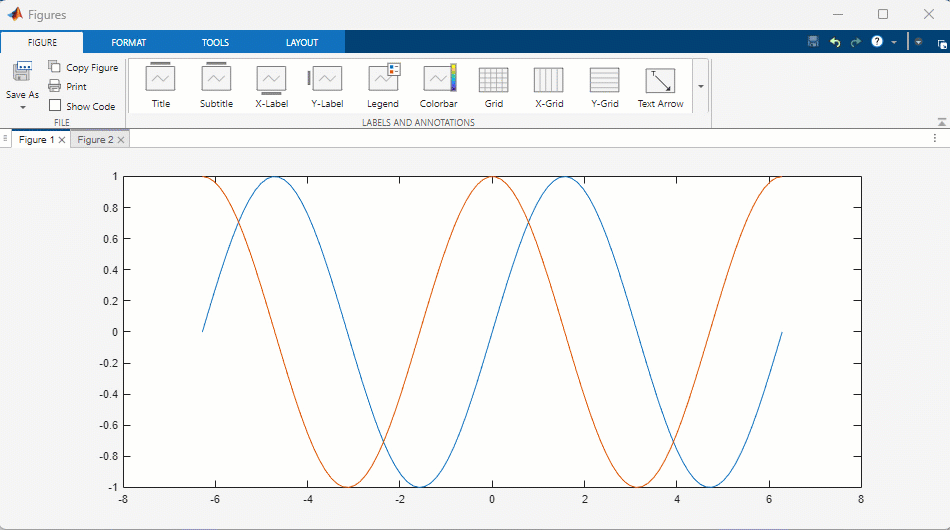新 MATLAB 桌面布局概述
从 R2025a 开始,MATLAB® 包含新桌面布局,具有可自定义的边栏,用于访问侧栏面板,如用于管理断点的“调试器”面板、用于协作的“工程”面板以及用于与 Git™ 和 SVN 交互的“源代码管理”面板。更新后的布局还包括主题、新图窗体验、全局搜索、改进的可访问性等。
桌面布局
使用具有可自定义边栏的新布局来访问桌面。
|
| 桌面左侧、右侧和底部的边栏显示停靠在桌面中的工具。
有关如何配置桌面布局的详细信息,请参阅配置桌面。 |
主题
使用主题更改 MATLAB 桌面颜色。
|
| 要选择深色主题,请执行以下操作:
有关详细信息,请参阅更改桌面主题和颜色。 |
图窗
在停靠的图窗容器中为图窗组织、浏览、自定义和生成代码。
|
| 默认情况下,图窗以选项卡形式在 MATLAB 桌面的停靠图窗容器中打开。
|
全局搜索
使用搜索来访问工具条操作、设置和帮助中心资源。
|
| 使用桌面右上角的搜索框访问:
|
代码建议
在命令行窗口中自动显示代码建议。
|
| 当您在命令行窗口中键入时,MATLAB 自动提供实时建议。
有关详细信息,请参阅代码建议。 |
辅助功能
使用屏幕阅读器和键盘与 MATLAB 交互并调整颜色和缩放级别。
|
| MATLAB 提供几项功能来帮助使其对用户可访问。
有关详细信息,请参阅Accessibility in MATLAB。 |





